May showed its best side when I visited the fjord villages by Aurlandsfjorden and Nærøyfjorden – with sunshine, blossoms, and snow-covered mountains in a beautiful meeting of two seasons.
May is the month many consider the most beautiful – when green meadows, blossoming apple trees, and snow-covered mountains surround the fjords of Western Norway. I set out on a photography and adventure trip to capture this very magic by the Aurlandsfjord and Nærøyfjord.
Read also: A summer trip in the Aurlandsfjord and Nærøyfjord.
Read also: Autumn in the Aurlandsfjord and Nærøyfjord.
Read also: A Winter adventure in the Aurlandsfjord and Nærøyfjord.
When the fjord villages come to life
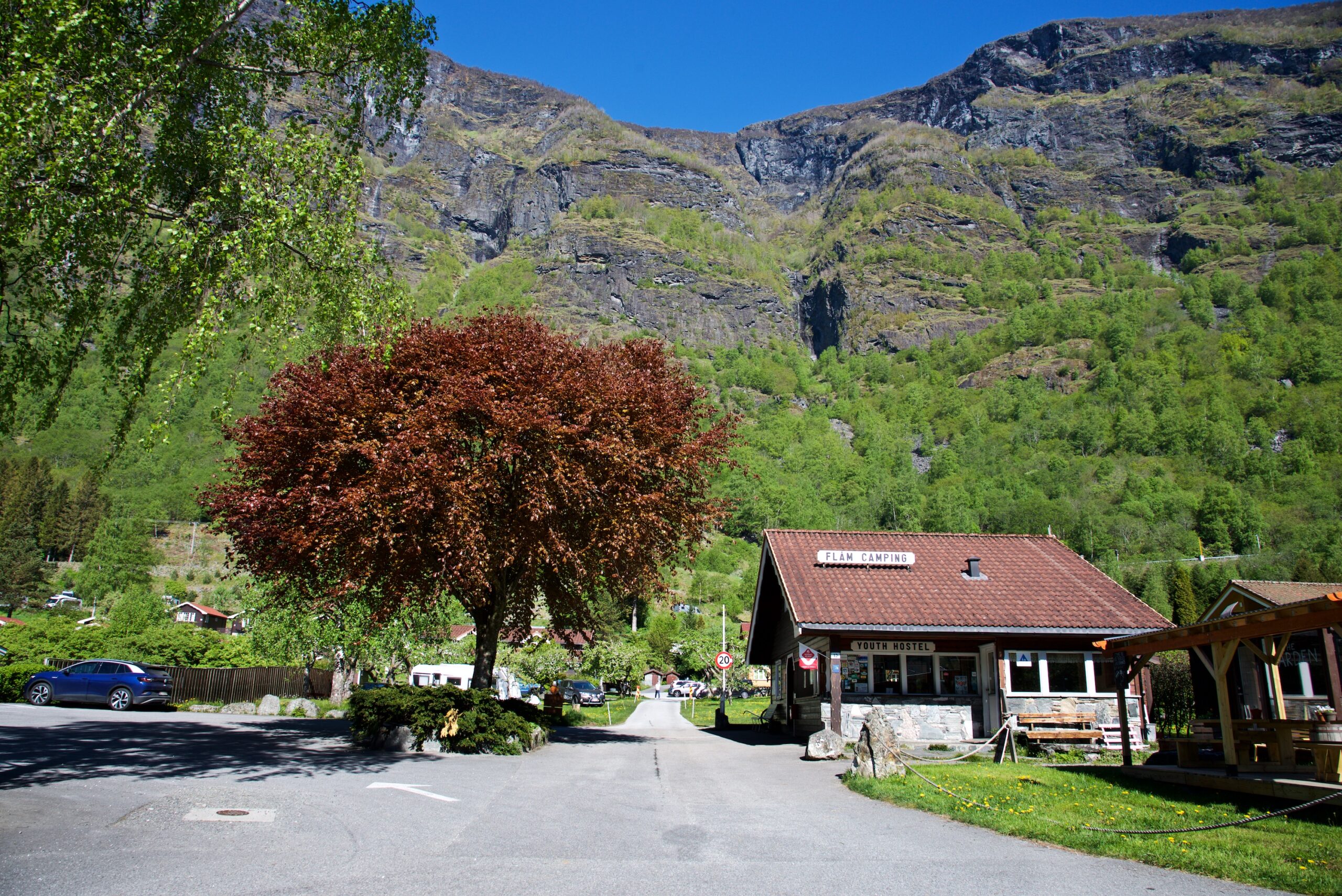
I packed hiking clothes, backpack, sleeping bag, and tent – and not least my camera gear – strapped the kayak to the car roof and drove from Oslo to Flåm and Flåm Camping and Hostel, which would be my home for the next few days. Flåm Camping and Hostel is located close to the centre of Flåm and is a great base for trips and adventures in one of the most beautiful and wildest areas in Norway.
And best of all, it’s only a short walk from the campsite to Flåm Bakery, where you can start the day with a good coffee and something tasty to eat before setting out on your fjord adventure.
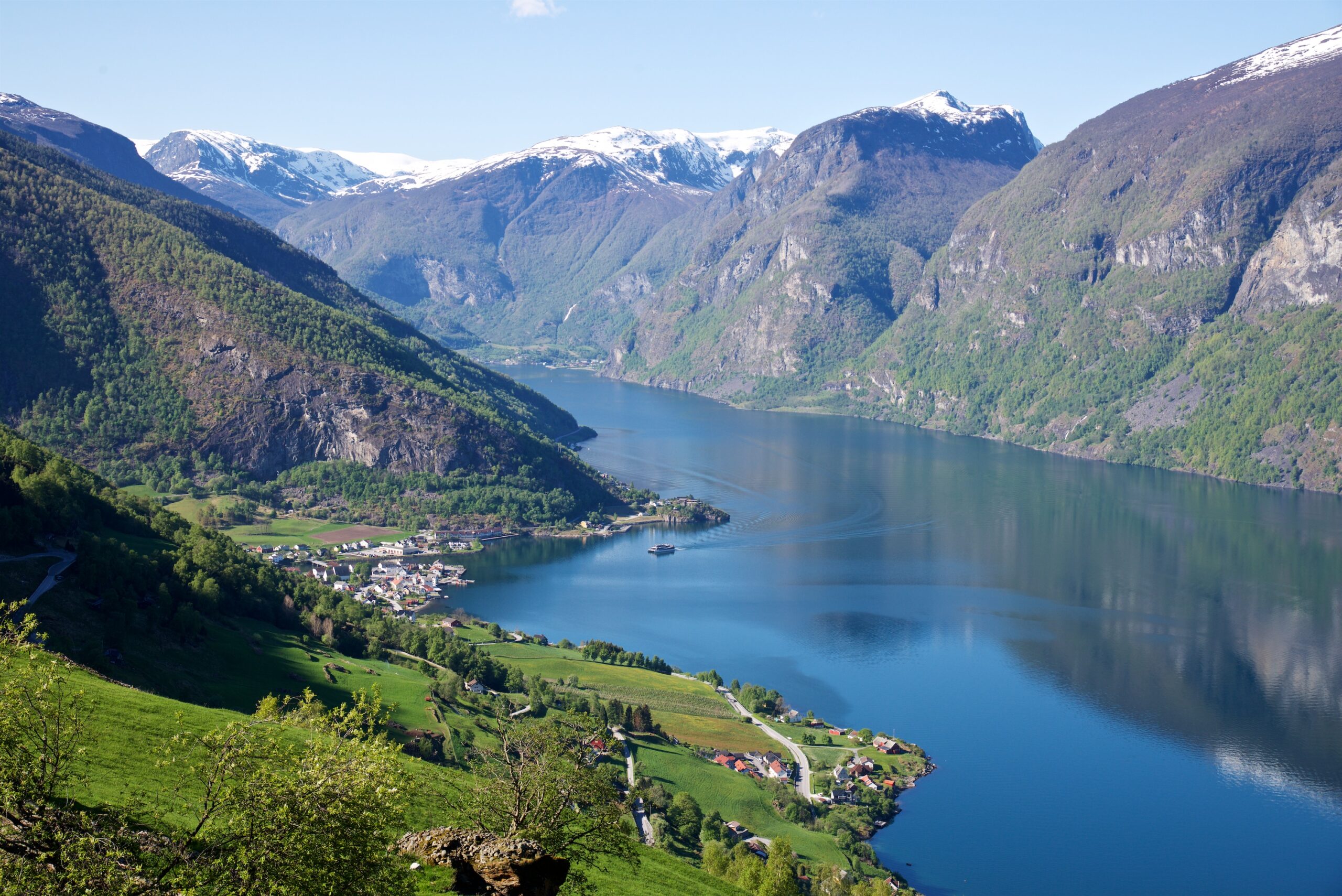
Flåm is a fantastic starting point for many great experiences and activities surrounded by the fjord and beautiful and wild nature. Where the Aurlandsfjord ends, the Flåm Valley begins. If the Aurlandsfjord is a fairytale, then the Flåm Valley might be an even more beautiful one – and both are a must to experience.
During the next four days, I got to experience two of the most beautiful fjords in the world in lovely spring weather. I wandered through the picturesque fjord villages of Flåm, Aurland, Gudvangen, Bakka, and Undredal.
I went on several trips to Stegastein, one of the most stunning viewpoints in Norway. There, I was lucky enough to witness the northern lights as a backdrop at night, and also watch the morning sun rise over the spectacular fjord.
Welcome along on a journey through some of the most beautiful landscapes Norway has to offer.

Day 1 – Stegastein, Otternes, Flåm Valley and Flåm Railway
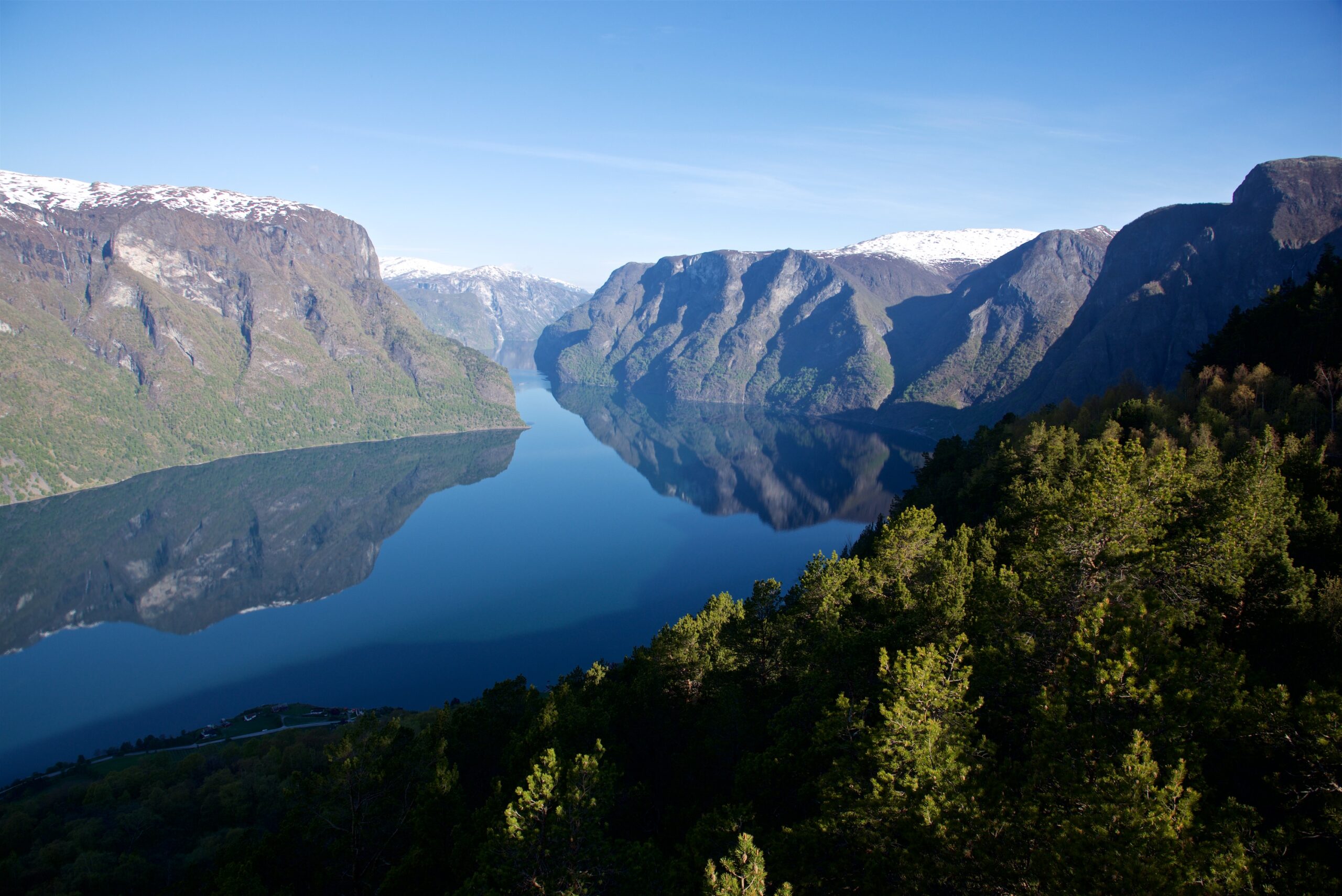
On the first day, I drove around on a photography tour and visited the Stegastein viewpoint, Otternes, the Flåm Railway, Flåmsdalen, and Gudvangen, which lies at the innermost part of the Nærøyfjord.
Stegastein viewpoint is part of the Aurlandsfjellet Scenic Route, 650 meters above Aurland and the Aurlandsfjord. The viewpoint itself is a walkway made of laminated timber that juts 30 meters out from the mountainside along the Aurlandsfjellet Scenic Route.
From there, the view of the Aurlandsfjord and the surrounding mountains is spectacular. The road up to Stegastein is open year-round, although in winter it is closed just above the viewpoint.
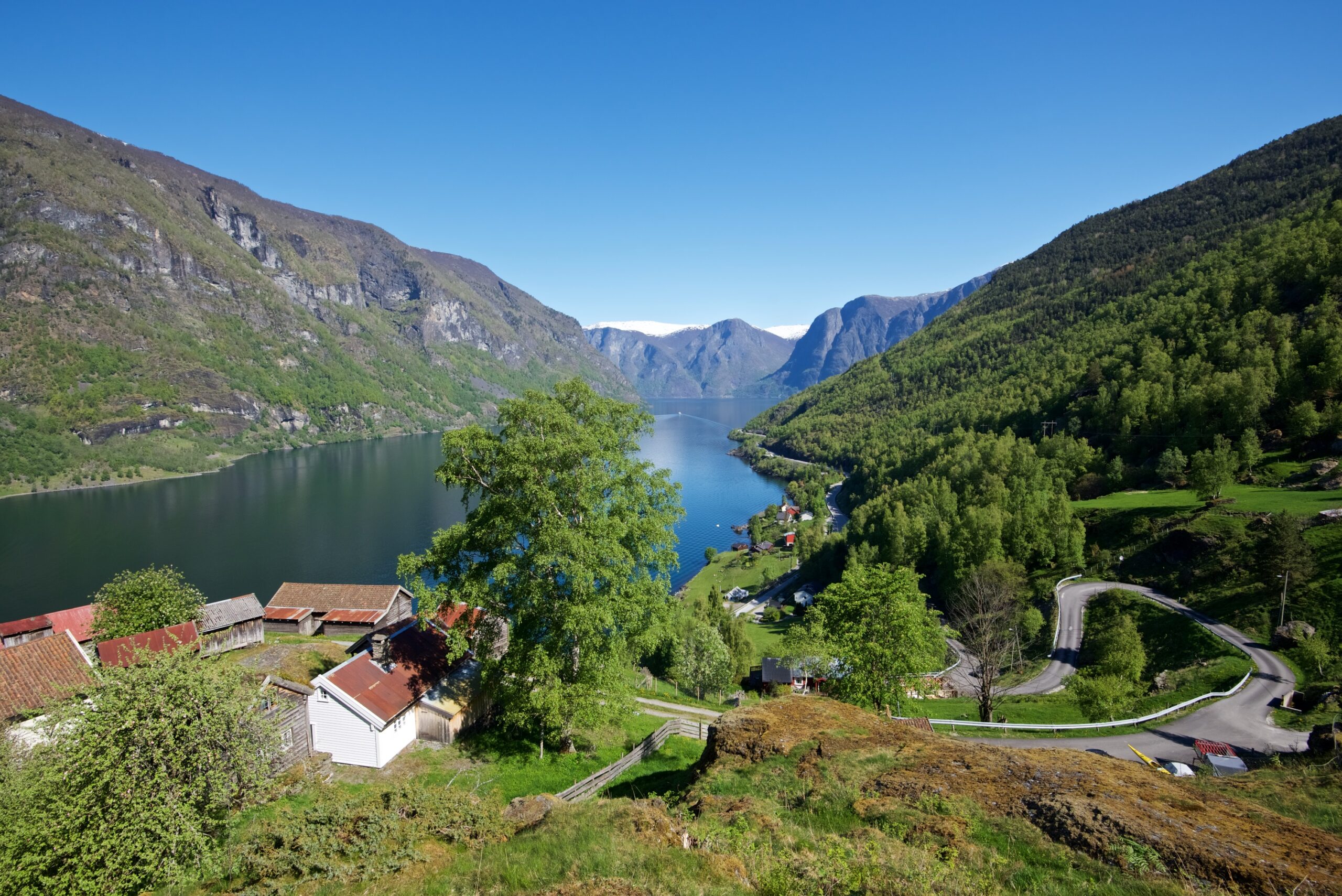
Otternes Farmyard is a clustered farmstead with 27 old buildings dating back to the 18th century. From the farmstead, there is a view inward toward Flåm and outward over the Aurlandsfjord toward the mountains towering above Aurland. The protected farmstead originally consisted of four farms.
At its peak, over 60 people lived on the farmyard, including those who lived nearby and worked on the farms. The farms were operated in the traditional way until they were abandoned.
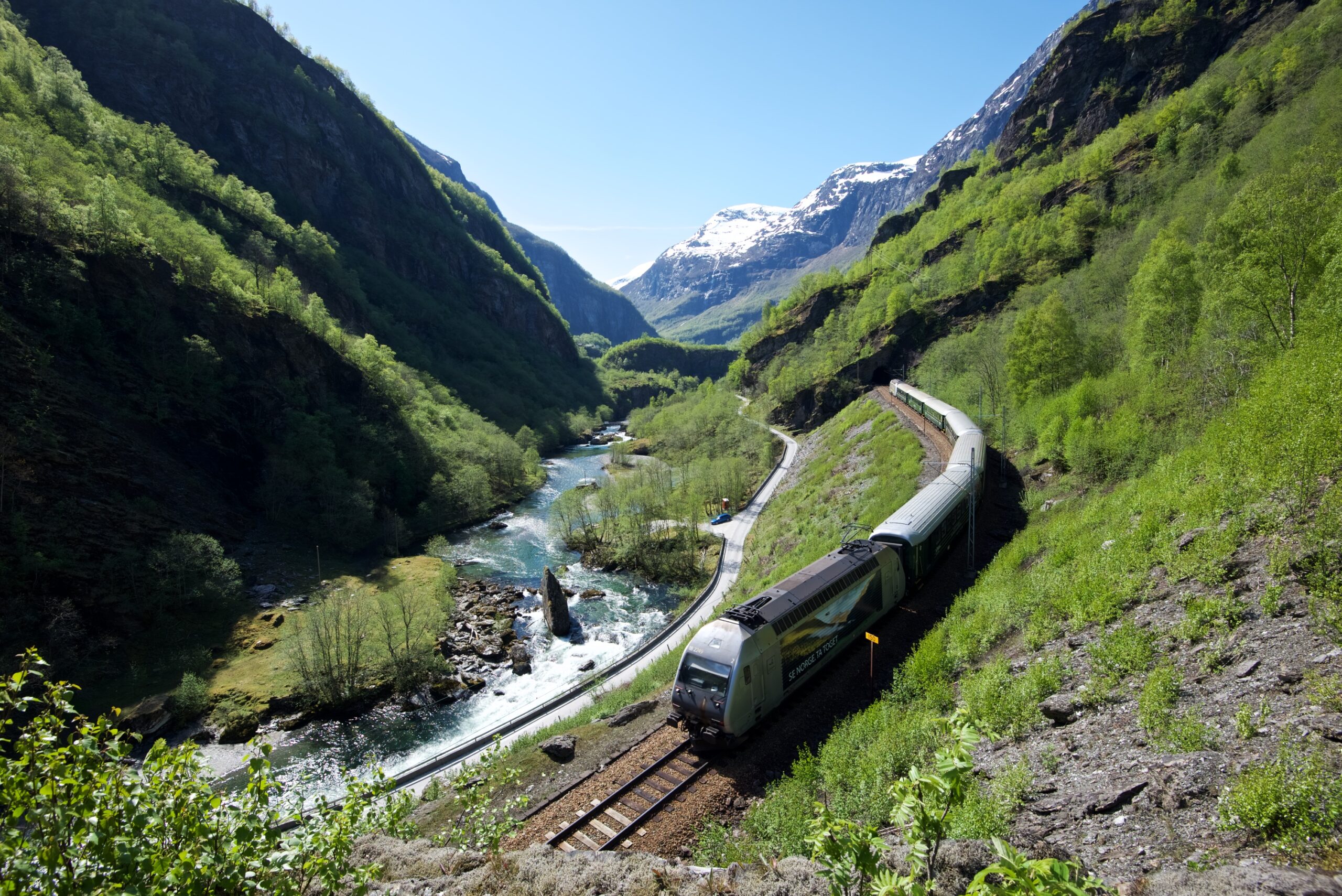
From Otternes, the journey continued into Flåm and a short way up the Flåm Valley. There, I could see the train on the Flåm Railway winding its way down along the steep mountainsides, crossing rivers and rapids, and in and out of some of the many tunnels the train passes through on its journey down toward the fjord.
A little further down the valley, Rjoandefossen Waterfall plunges in a free fall. Rjoandefossen is a prominent waterfall in the Flåm Valley. The waterfall drops down the valley on the opposite side of the Flåm Railway, and can be seen from the railway on the south side of the 424-meter-long Furuberget Tunnel. Rjoandefossen has a total drop of over 300 meters, with the highest vertical fall measuring 147 meters.

In the afternoon, until the sun went down, I was lucky enough to wander around one of the farms located by the Nærøyfjord.
The Nærøyfjord is one of the most beautiful and dramatic fjords in the world and is part of our common World Heritage. On July 14, 2005, the Nærøyfjord and its surrounding area were inscribed on UNESCO’s World Heritage List along with the Geirangerfjord.
It was just me, the sheep, and the flower-covered meadows, surrounded by beautiful and wild nature. It was a perfect ending to an amazing day in this stunning part of the Sognefjord, Norway’s longest fjord.
Day 2 – Kayaking the Nærøyfjord and Northern Lights above the Aurlandsfjord
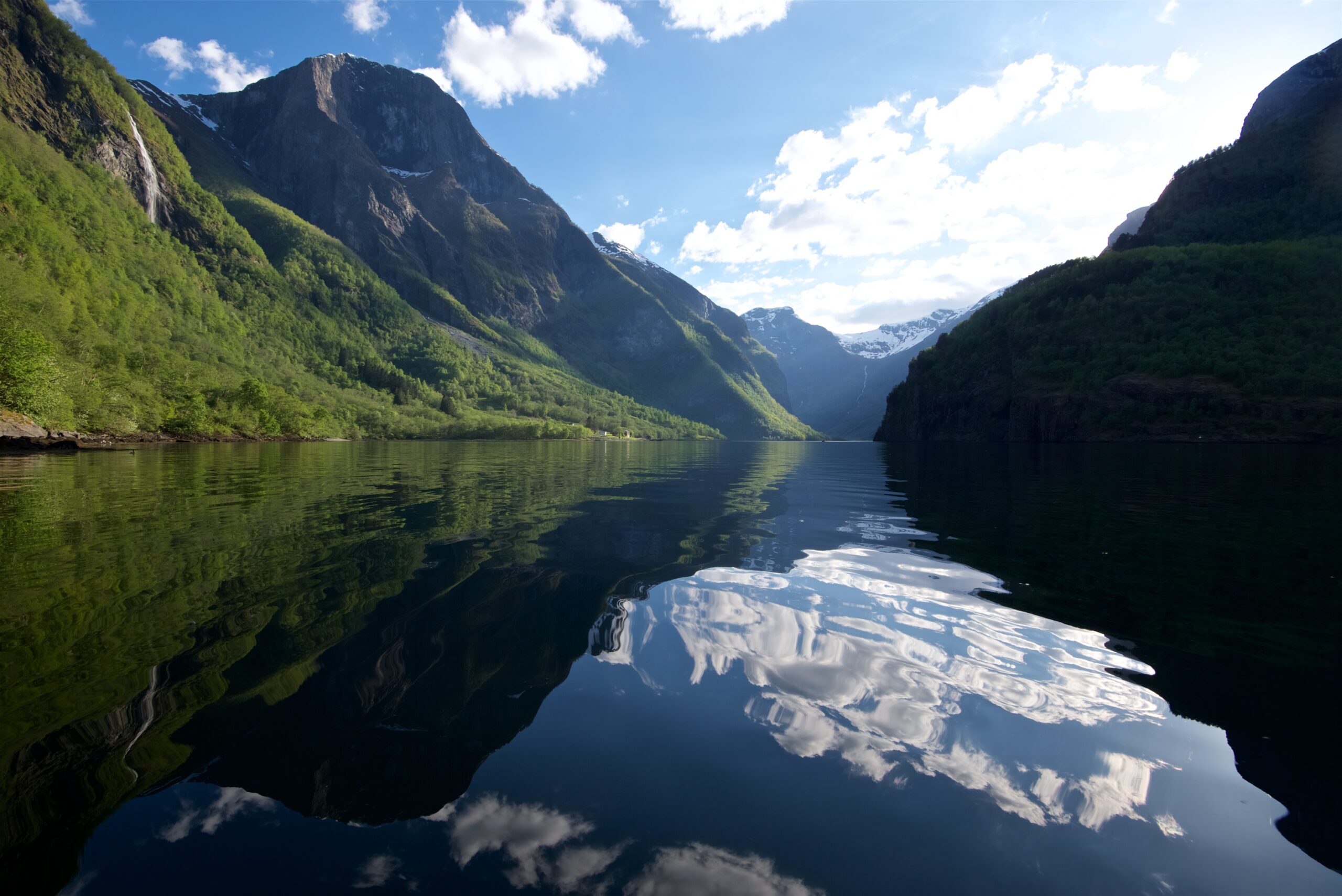
The next day started like the previous one, at the Stegastein viewpoint. Afterwards, I drove to Gudvangen, which was the starting point for the day’s adventure: a day kayaking on the Nærøyfjord.
I paddled out along the mirror-like fjord, past Bakka, to the area between Dyrdal and Styvi, located roughly in the middle of the 17-kilometer-long World Heritage fjord.

I spent the entire day on the fjord, only going ashore at Dyrdal, and returned to Gudvangen late in the afternoon.
The Aurlandsfjord and Nærøyfjord are two fjords that are wonderful to explore by kayak. For safety reasons, we recommend joining guided kayak tours if you plan to paddle on the fjords. Guided kayak tours are available from Flåm at the innermost part of the Aurlandsfjord and from Gudvangen at the innermost part of the Nærøyfjord.
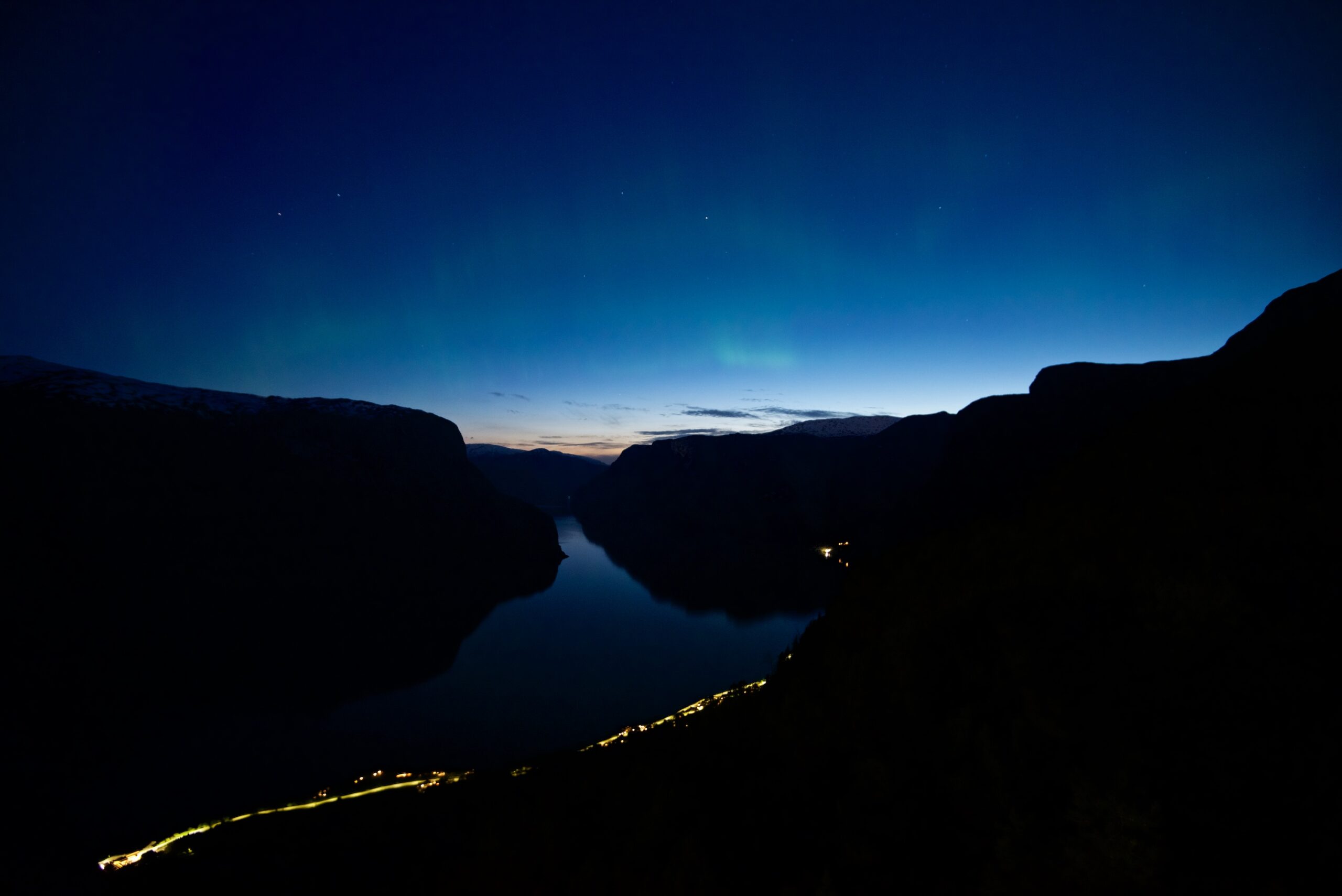
I ended the day with a delicious dinner at Flåm Marina, which also offers the best fjord views in Flåm. In the evening, I was lucky enough to experience the northern lights at Stegastein.
Below, you can see photos from this amazing day on the fjord. Under the photos, there is a video showing some of the adventures I had during my four-day trip in the area around the Aurlandsfjord and Nærøyfjord in May. The video include clips from Stegastein, the Nærøyfjord, the Aurlandsfjord and from Undredal.
Day 3 – Rimstigen by the Nærøyfjord and Undredal by the Aurlandsfjord

The next day, I drove out along the Nærøyfjord to the starting point of the steep trail up Rimstigen. I hiked a short way up to get a view over the fjord. Photography and video were the main focus here.
Afterwards, I drove back to Gudvangen and continued toward Flåm, but before the last tunnel, I turned left and drove down the beautiful Undredalsdalen Valley to Undredal. Undredal is a small fjord village located by the Aurlandsfjord. The film Frozen I was inspired by this little village, surrounded by steep cliffs rising straight from the fjord. Undredal, the idyllic village by the Aurlandsfjord, is known for its many goats and the locally produced white and brown goat´s cheese.
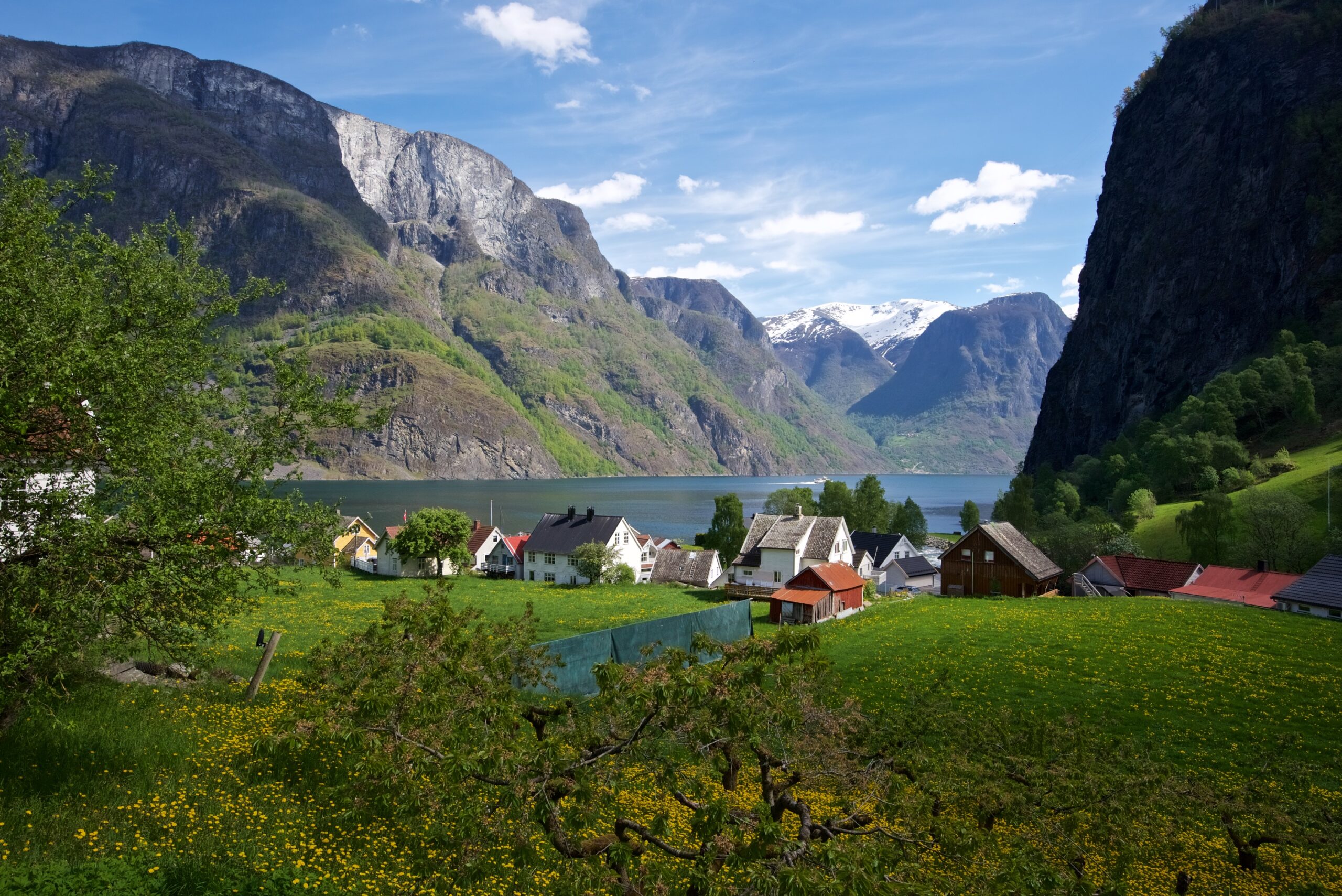
From Undredal, I went kayaking on the Aurlandsfjord. However, due to wind and some waves, the kayak trip on the fjord was short before I paddled back to Undredal.
I then wandered around Undredal and experienced the beautiful village surrounded by meadows and apple trees in full bloom. I even got a guided tour inside Norway’s smallest church, Undredal Stave Church, with beautiful organ music performed by the guide from Explore Undredal.
Day 4 – Stegastein in Aurland and Fjord Farm and Brekkefossen in Flåm
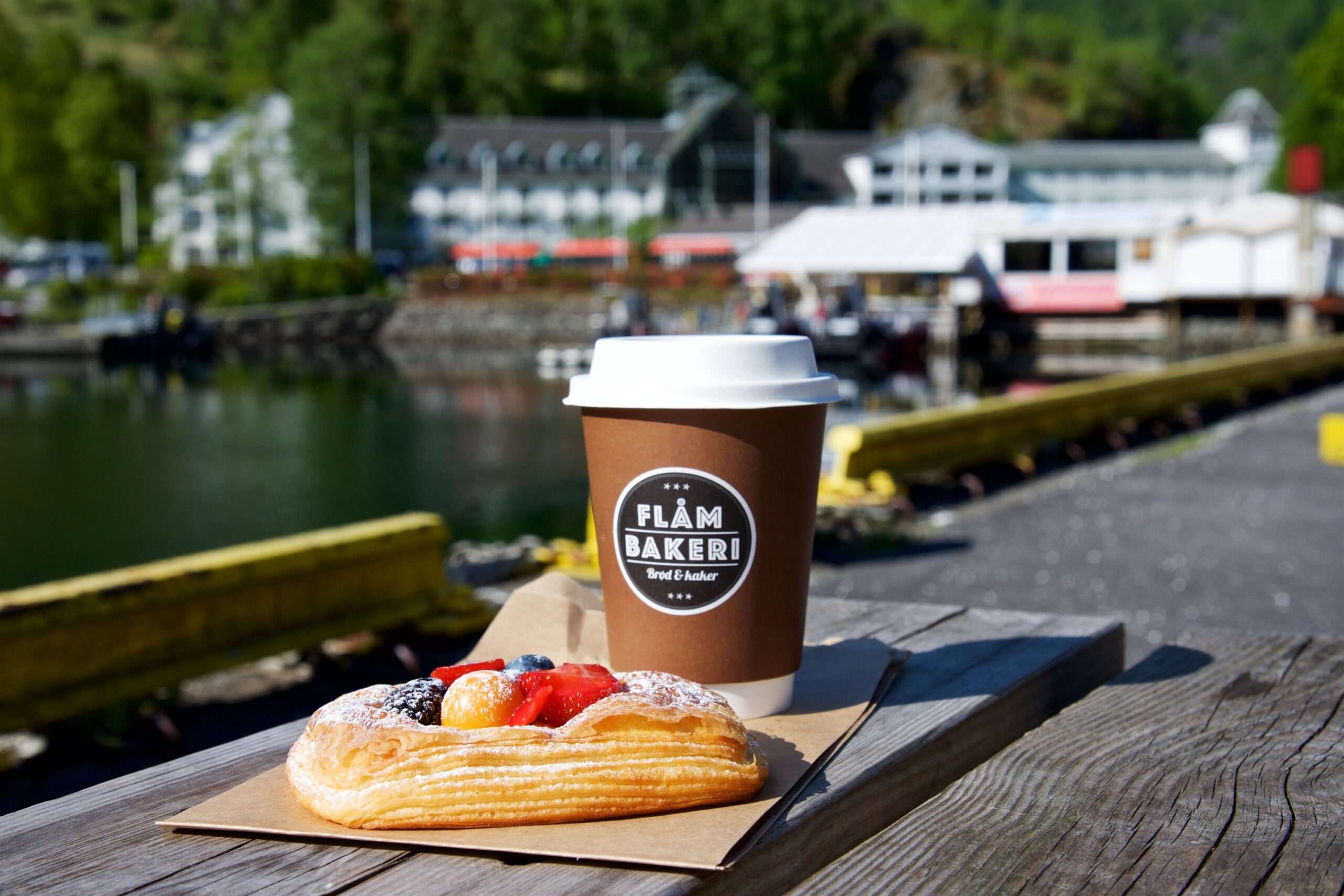
On the last day, the day of departure, I once again started at Stegastein. What a fantastic way to start the day, with sunshine from a clear sky and a mirror-like Aurlandsfjord. The trip then continued to Flåm and Flåm Bakery for a refill of coffee and something tasty to eat before I walked out along the pier to Fjord Farm, just a stone’s throw from Flåm Station.
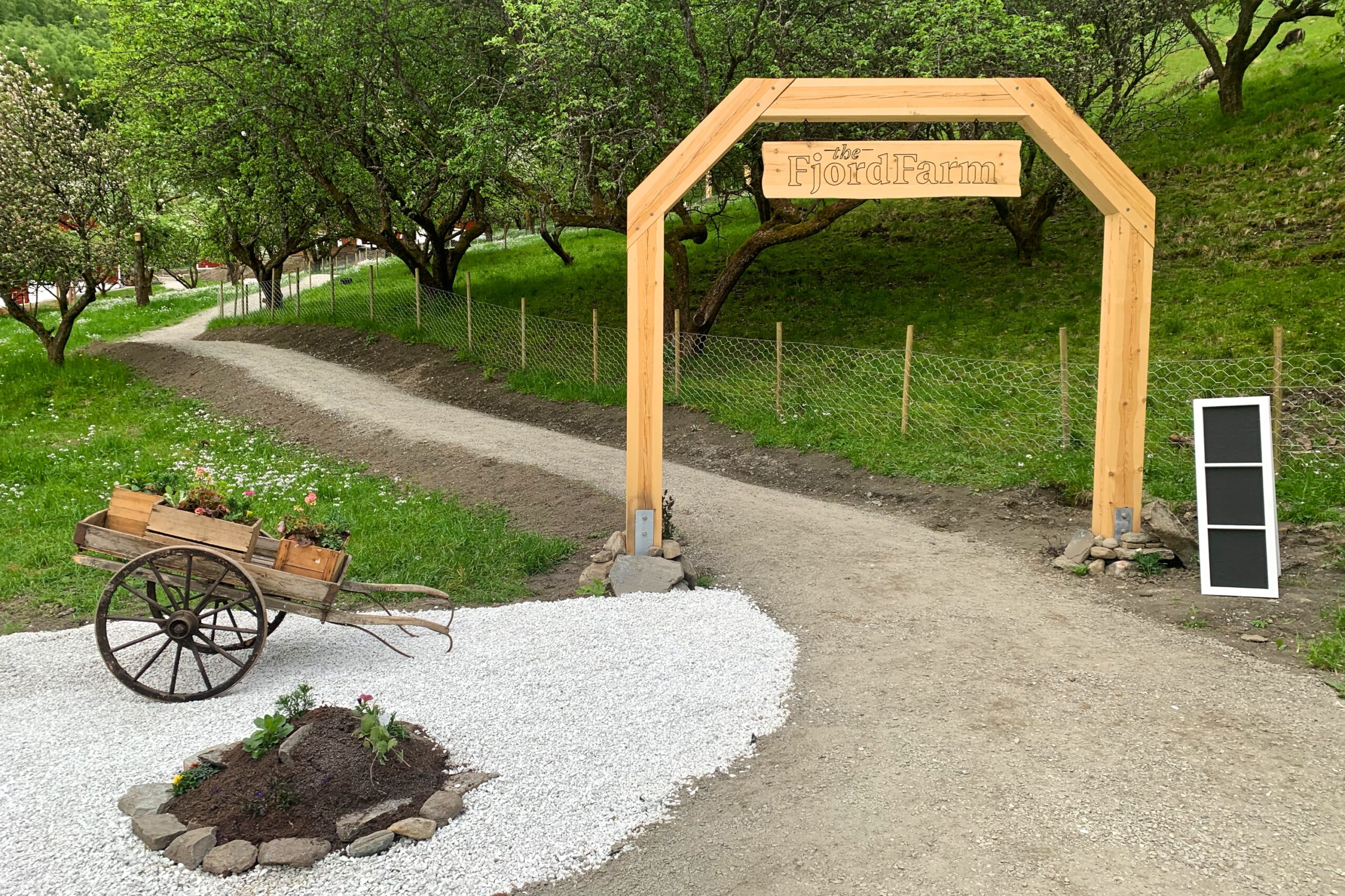
Fjord Farm offers a peaceful and down-to-earth contrast to the lively centre of Flåm, which is often crowded with visitors during the summer season. Here, you can stroll through the apple orchard with views over the Aurlandsfjord, enjoy coffee and homemade cake at the garden café, or say hello to small farm animals like goats, mini pigs, sheep, and chickens in a cozy and calm atmosphere.
The trip then continued to Brekkefossen Waterfall, a popular hiking destination for visitors to Flåm. A well-maintained trail leads up to the viewpoint at Brekkefossen.

The first part of the trail is a gravel path, followed by 578 stone steps leading up to the Raokjen viewpoint.
FjordSafari organizes guided tours from Flåm to the viewpoint at Brekkefossen. The first part of the tour is about two kilometers long along the road by the Flåmselvi River from Flåm to Brekkevegen, after which the rest of the tour continues along the trail up to Raokjen.
The trail is approximately 1.3 kilometers long with an elevation gain of 170 meters.
The journey home via Borgund Stave Church and Vindhellavegen

The drive back to Oslo went from Flåm via Aurland and continued through the Lærdal Tunnel, the world’s longest road tunnel, to Lærdal by the Lærdalsfjord. The Lærdalsfjord is a branch of the 204-kilometer-long Sognefjord. From there, I drove up the Lærdalsdalen Valley to Borgund, where I visited Borgund Stave Church and Vindhellavegen before continuing home to Oslo.

Borgund Stave Church was built around 1181 AD and is the most visited stave church in Norway. Just behind the stave church lies the old road Vindhellavegen, which runs between Borgund and Husum in Lærdal. From Borgund Stave Church, it’s only a short walk to Vindhellavegen.
Vindhellavegen is part of the old King’s Road connecting eastern and western Norway. The road was completed around year 1790 AD and is now part of a 100-kilometer-long hiking route between Lærdal by the Sognefjord and Vang in Valdres.
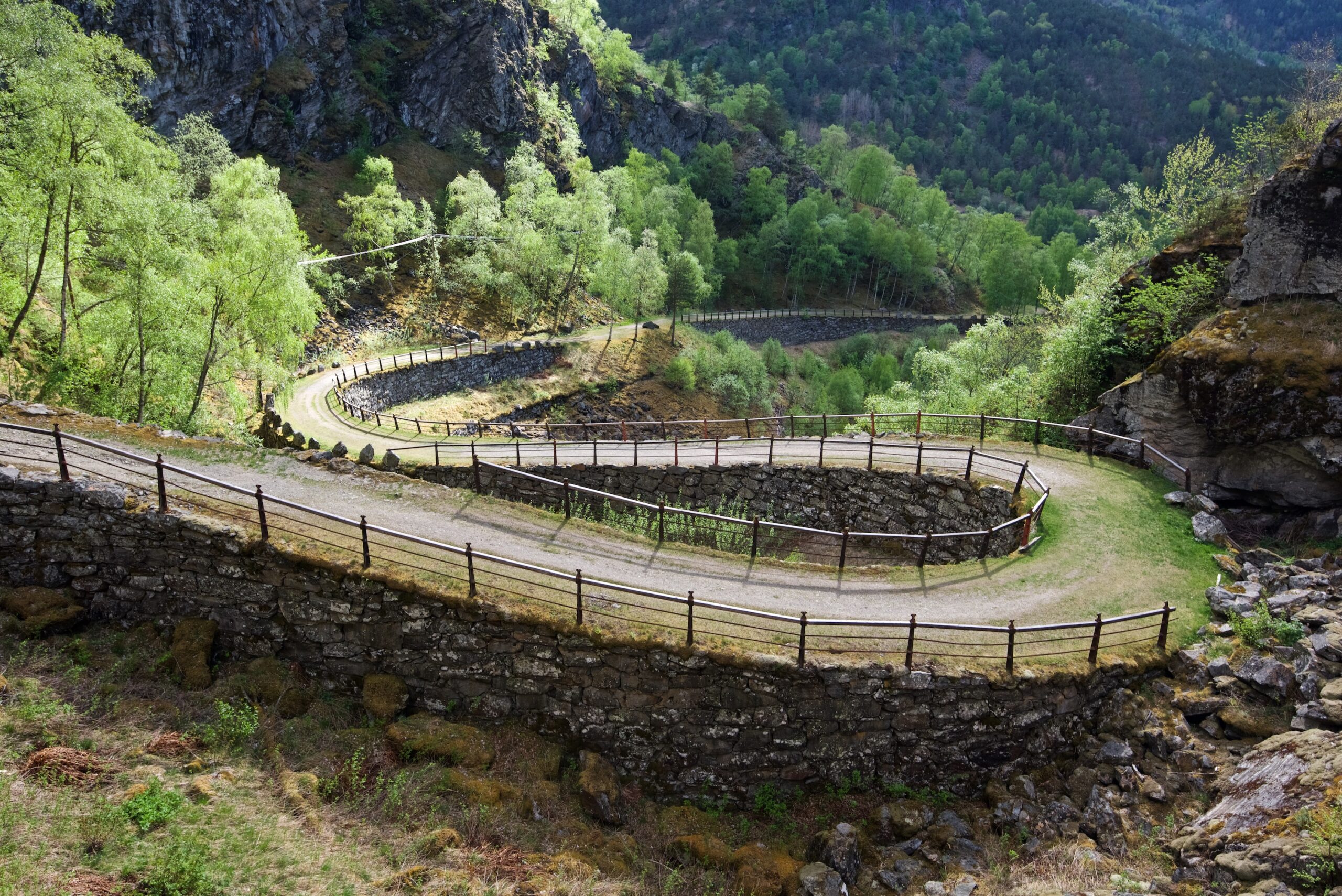
Today, the old King’s Road is a popular hiking destination, where you can choose from various tour packages with overnight stays, tailored to the time you have available.
Below, you can see photos from the journey home. I had a few fantastic days by the Aurlandsfjord and Nærøyfjord, with many amazing nature experiences and weather that stayed on my side the entire time.
The trip to Sogn was truly a wonderful experience – my favourite area in Western Norway delivered once again.
Flåm by the Aurlandsfjord
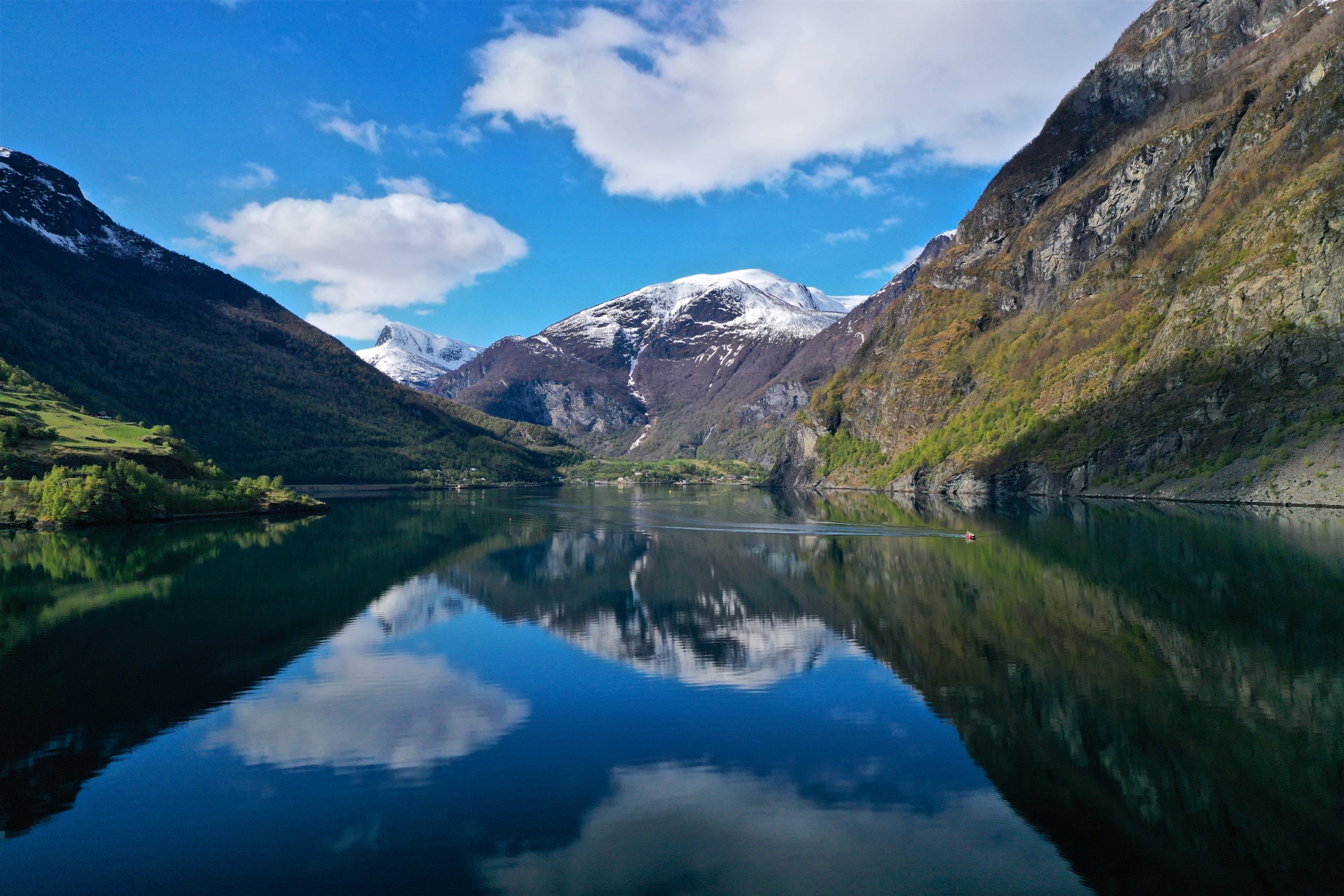
Flåm is one of several fjord villages located by the Aurlandsfjord. Flåm is a fantastic starting point for many great adventures in beautiful and wild nature.
Where the Aurlandsfjord ends, the Flåmsdalen Valley starts. If the Aurlandsfjord is an adventure, the Flåmsdalen Valley is an even more beautiful adventure, and both should be experienced.
It is easy to travel to Flåm. “All roads” leads to Flåm, and you can also get there by train via the Bergen Line and Flåm Railway. If you take the Flåm Railway down to Flåm, you will experience the beautiful Flåmsdalen Valley at the same time.
You can experience and do a lot with Flåm as a starting point. A fjord cruise on the Aurlandsfjord and the Nærøyfjord or a trip on the fjord with Fjord Safari is a must. So is a visit to Flåm Bakery, located on the quay near where the fjord cruise starts.
You can see and do a lot with Flåm as a starting point. In Flåm there are many places to eat and sleep. It is also a short distance to other beautiful fjords where you can visit idyllic fjord villages and experience beautiful and dramatic nature.
Aurlandsfjord and Nærøyfjord – What to See and Do
Flåm, Aurland and Gudvangen are perfect starting points for experiences and activities in and around the Aurlandsfjord and Nærøyfjord, two of the world’s most beautiful and dramatic fjords. On July 14, 2005, the Aurlandsfjord and Nærøyfjord and the surrounding area were inscribed on the UNESCO World Heritage List together with the Geirangerfjord. The Aurlandsfjord and Nærøyfjord are both branches of the 204 kilometer long Sognefjord, which is located in the middle of Western Norway.
Visit Sognefjord
Visit Sognefjord is the official destination company for the Aurlandsfjord, Nærøyfjord and Sognefjord area.

Hotels and accommodation in the Aurlandsfjord and Nærøyfjord area
Overview of hotels and other places where you can spend the night in the area around the Aurlandsfjord and Nærøyfjord.
Sakte – Stay and Explore the Aurlandsfjord and Nærøyfjord
“Sakte” is a collaboration between companies that provide adventures, accommodation, dining and short-travelled food- and products. “Sakte” are located in the area around the Aurlandsfjord and Nærøyfjord and is an offer for those who want to contribute to a sustainable society in the world heritage area.


